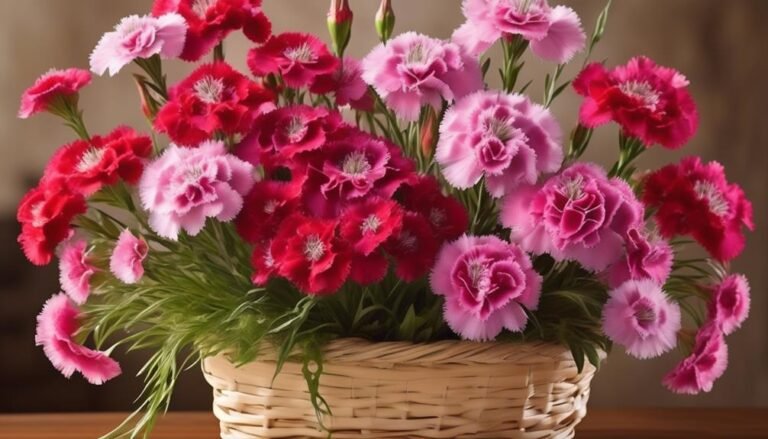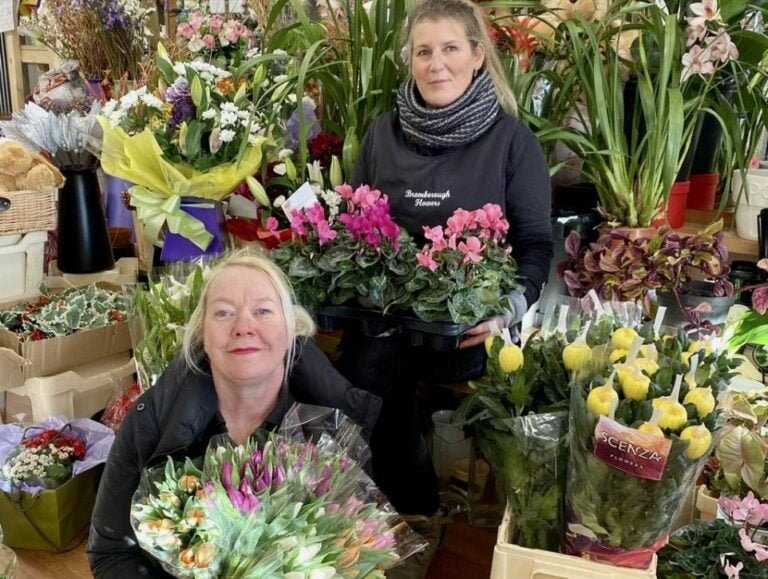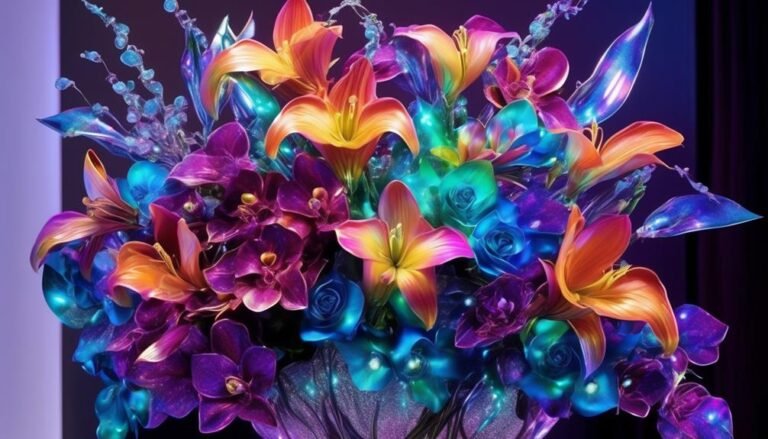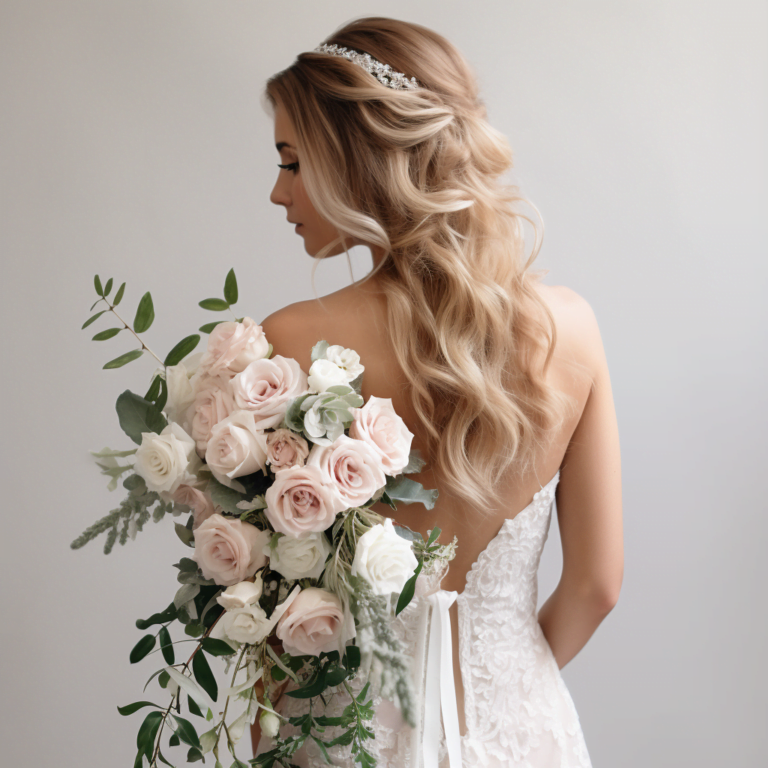Popular Types of Florist Flowers – Gladiolus
Gladiolus, also known as sword lily, is a stunning flower with tall, graceful stems and vibrant blooms. This flower has a rich history and comes in a variety of colors and characteristics, making it a popular choice for floral arrangements.
History of Gladiolus:
Gladiolus has a fascinating history, with its name derived from the Latin word 'gladius,' meaning sword. It was named by the ancient Romans, who associated the flower with gladiators due to its sword-shaped leaves. The flower has been cultivated for over 2,000 years and has evolved into numerous hybrid varieties.
Characteristics and Varieties:
Gladiolus flowers come in a wide range of colors, including red, pink, purple, yellow, and white. They are known for their tall spikes and multiple blooms, making them a favorite for adding height and color to floral arrangements. There are over 260 different species of gladiolus, each with its own unique characteristics and growing requirements.
Care Tips for Gladiolus:
To ensure the long-lasting beauty of gladiolus flowers, it's important to provide them with proper care. Plant the corms (bulbs) in well-drained soil and place them in a sunny location. Keep the soil evenly moist but not waterlogged, and provide support for the tall stems to prevent them from bending or breaking. Gladiolus flowers can also be kept as cut flowers in vases, where they will continue to bloom and add elegance to any space.
In conclusion, gladiolus is a versatile and captivating flower that has been cherished for centuries. Its history, variety of colors, and care tips make it a popular choice for both floral enthusiasts and those who simply appreciate the beauty of nature.
Scientific Name
The Gladiolus, also known as the sword lily, belongs to the genus Gladiolus in the Iridaceae family. Its scientific name, 'Gladiolus,' is derived from the Latin word 'gladius,' meaning sword, referencing the plant's sword-shaped leaves. This name reflects the plant's botanical characteristics and has contributed to its enduring cultural significance.
The Gladiolus encompasses over 260 species, each with its unique scientific name, and is often associated with remembrance, calm, and integrity in the language of flowers. Its tall, striking blooms symbolize strength, moral integrity, and infatuation, making it a popular choice for various floral arrangements, especially in ceremonies and tributes.
In ancient Rome, the gladiolus flower was planted around the gladiators' dwellings as a tribute to their bravery and strength, and it also became a symbol of moral integrity, infatuation, and sincerity over time.
Background History
The Gladiolus has a rich historical significance dating back to ancient Rome. It was closely associated with the bravery and strength of gladiators, symbolizing virtues such as honor and moral integrity. Gladiators carried Gladiolus flowers as a form of protection and to invoke the favor of the gods during battles.
The name 'Gladiolus' is derived from the Latin word 'gladius,' meaning sword, highlighting its connection to the gladiators and their iconic weapon. The sword-shaped leaves and tall flower spikes of the Gladiolus symbolized strength and victory, making it a powerful emblem of resilience and perseverance.
Beyond the gladiatorial arenas, the flower came to represent moral integrity and the ability to overcome challenges. Even today, the legacy of the Gladiolus in ancient Rome is celebrated for its association with these timeless virtues.
Physical Description

Gladiolus blooms are known for their tall, graceful stems and vibrant array of colors, making them a striking addition to any floral display. The stems can reach up to four feet in height, providing a sturdy and elegant vertical element in bouquets and centerpieces.
Gladiolus blooms come in a wide spectrum of colors, including red, orange, yellow, purple, maroon, mauve, peach, apricot, and cream, offering endless creative possibilities in floral design. These physical attributes make gladiolus highly versatile in floral arrangements, adding height and drama to any bouquet and centerpiece.
Additionally, the cultural significance of gladiolus varies, with meanings ranging from strength and integrity to infatuation and remembrance.
Colours and Characteristics
Gladiolus flowers are known for their vibrant colors and striking physical characteristics. With a wide spectrum of colors including red, orange, yellow, purple, white, maroon, mauve, peach, apricot, and cream, they offer endless creative possibilities for floral arrangements. The enormous blossoms display fancy ruffles and come in bi-colors and tri-colors, adding diversity to floral displays.
The tall, graceful stems of gladiolus can grow up to four feet in height, making them ideal for adding height and drama to floral centerpieces and bouquets. Their long, pointed leaves resemble a Roman gladiator's weapon, adding to their visual appeal. Gladiolus blooms from the bottom up, producing multiple funnel-shaped flowers, further enhancing their beauty in arrangements.
In ancient Rome, gladiolus was associated with gladiatorial combat, symbolizing strength, honor, and moral integrity. This historical significance makes them a meaningful choice for special occasions such as graduations and achievements. Their vibrant colors and dramatic presence make them suitable for a wide range of occasions, from formal events to casual gatherings.
Varieties Available
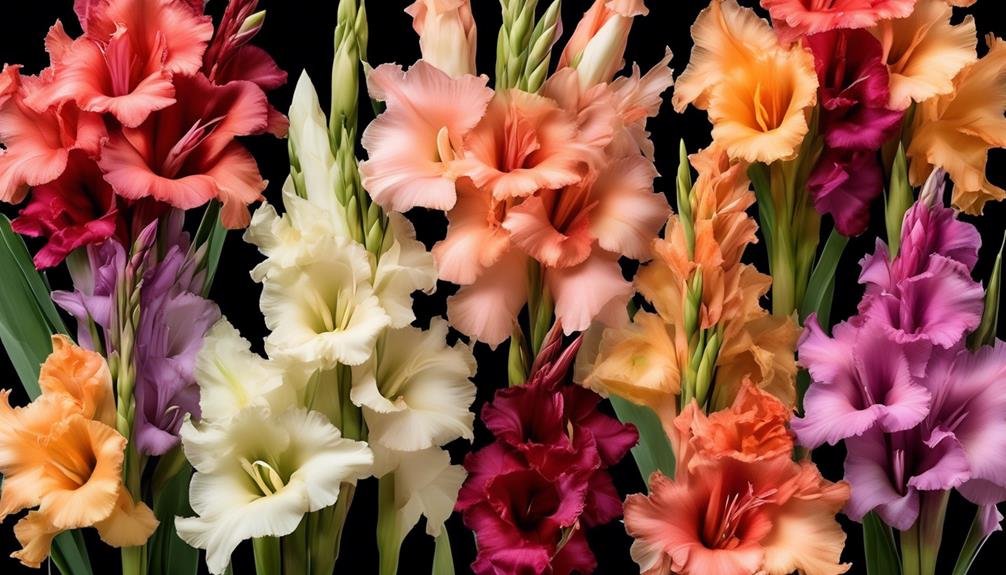
Gladiolus flowers come in a wide variety of options, each with its own unique charm and characteristics. Popular varieties include Gladiolus Charm, Mon Amour, Prins Claus, White Prosperity, and Claudia, known for their striking blooms and range of colors. For more diverse options, varieties like David Hills, Espresso, Robinetta, papilio, communis subsp. byzantinus, and Black Beauty offer distinct features that add depth to floral arrangements. Additionally, Gladiolus albus and Gladiolus tristis var. concolor stand out for their unique characteristics.
The wide flowering time of Gladiolus varieties, from late spring to early fall, allows for continuous blooming and the possibility of incorporating them into various floral designs throughout the season. This makes them an ideal choice for home gardeners looking to add elegance and vibrancy to their outdoor spaces.
Seasonal Availability
Gladiolus, popular for their vibrant colors, are typically available from late spring to early fall, with peak availability during the summer months. These flowers thrive in well-drained soil and require full sun exposure for optimal growth. Planting them in early spring allows for a summer bloom, providing an abundant supply for floral arrangements.
During their peak season, gladiolus can be readily found in floral shops and garden centers, making them a popular choice as cut flowers for arrangements. Their long stems and striking blooms make them ideal for creating stunning bouquets and centerpieces.
To ensure the best selection and quality, it's best to check with local florists or growers for specific seasonal availability in your area. Whether you're a floral designer or simply enjoy having fresh flowers at home, taking advantage of the seasonal availability of gladiolus can enhance any floral display.
Care Tips

Gladiolus Care Tips for Fresh and Vibrant Blooms
Arranging Gladiolus in a Bouquet:
- Trim the stems: Cut 3 to 6 cm off the stems at a slant using a clean knife before placing them in a clean vase to enhance water absorption.
- Use cut flower food: Add cut flower food to the water in the vase to provide essential nutrients for prolonging the lifespan of the blooms.
Preserving the Beauty of Gladiolus Blooms:
- Change the water: Regularly change the water in the vase every few days to prevent bacterial growth and keep the flowers hydrated.
- Avoid direct sunlight and drafts: Place gladioli in a location away from direct sunlight and drafts to maintain their freshness and prevent wilting.
- Keep away from fruits: Avoid placing gladioli near fruits as they release ethylene gas, which can cause the flowers to wilt prematurely.
What Makes Gladiolus Flowers Popular Among Florists?
Gladiolus flowers are popular among florists for their vibrant colors, long vase life, and versatility in various floral arrangements. These types of florist flowers are known for their elegant and striking appearance, making them a favorite choice for bouquets, centerpieces, and other decorative displays.
Conclusion
Gladiolus is a popular choice for bouquets and gardens due to its wide range of colors and varieties. It's associated with strength and honor, making it a valuable addition to any floral arrangement or garden.
Gladiolus's attractive blooms and ability to attract pollinators contribute to its appeal. With proper care and attention to seasonal availability, Gladiolus can continue to be enjoyed for their beauty and contribution to biodiversity.

